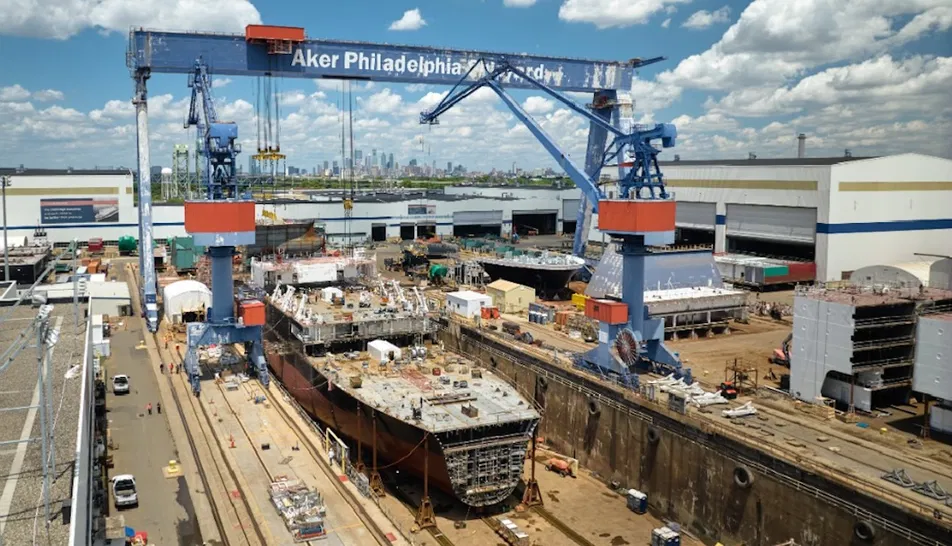Situation actuelle de la construction navale aux États-Unis
Le secteur maritime connaît des changements significatifs au niveau du leadership, qui pourraient avoir des répercussions sur le paysage de la construction navale. Notamment, Ian Bennitt, qui était le directeur principal de la capacité maritime et industrielle au Conseil national de sécurité (CNS), quitte son poste pour saisir des opportunités dans le secteur privé. Cette transition soulève des questions sur l'orientation future des efforts américains visant à améliorer la construction navale et à réduire la concurrence étrangère.
Points clés de la transition :
- Départ de Ian Bennitt : Son départ marque un tournant significatif dans le leadership maritime.
- Restructuration du NSC : Une restructuration au sein du NSC a conduit à la consolidation de son bureau maritime.
- Implication du département d'État : La supervision maritime a été transférée au Département d'État, ce qui complique les initiatives maritimes antérieures.
- Changements de personnel : Le bureau maritime du NSC a connu une attrition importante de son personnel et fonctionne désormais avec une équipe beaucoup plus réduite.
Les implications du départ de Bennitt
Le départ anticipé de Bennitt vers le secteur privé jette un pavé dans la mare des initiatives en cours visant à revitaliser la construction navale américaine. Non seulement cela crée un vide en matière de leadership au sein des opérations maritimes du NSC, mais cela souligne également la fragilité de la stratégie maritime américaine à un moment où la concurrence mondiale dans le transport maritime est féroce. Le bureau maritime du NSC a été initialement créé dans le cadre d'un décret visant à renforcer les capacités de construction navale des États-Unis, en particulier face à la domination croissante de la Chine dans la logistique maritime.
Restructuration et ses conséquences
La restructuration du NSC a entraîné la fusion et la suppression de diverses sections, affectant directement le bureau maritime. Cette décision, confirmée par la porte-parole Anna Kelly, suggère que les préoccupations maritimes sont de plus en plus englobées par des fonctions plus larges de gestion financière typiquement associées à l'Office of Management and Budget. La transition signifie que la stratégie maritime pourrait manquer de défense ciblée.
L'attrition du personnel dans les opérations maritimes
Avec des rapports détaillant que plus de cinq des sept membres du personnel avaient quitté leurs fonctions en juillet, le bureau maritime fonctionne avec un personnel réduit au minimum. Ces départs signalent une perturbation potentielle des connaissances organisationnelles et de la continuité opérationnelle, ce qui pourrait affaiblir davantage les influences maritimes américaines, précisément au moment où l'intégrité structurelle et le plaidoyer sont les plus cruciaux.
Impact du nouveau rôle du Département d'État
Le récent transfert de la surveillance au département d'État américain signifie que les questions maritimes seront désormais gérées en parallèle avec les questions de politique étrangère. Ce mélange de responsabilités peut diluer l'attention portée aux initiatives de construction navale, ce qui pourrait entraîner des réponses plus lentes aux défis maritimes. Des tendances inquiétantes indiquent que les stratégies logistiques, y compris celles qui concernent le commerce maritime international, pourraient ne pas recevoir l'attention urgente qu'elles nécessitent.
Dynamique du transport maritime mondial
Avec l'accélération des tendances mondiales en matière de transport maritime et les défis à venir posés par les exigences du marché, il est impératif que les politiques maritimes américaines suivent le rythme. La dynamique au sein du secteur de la logistique, du transport de marchandises à la gestion des navires, sera étroitement surveillée à la suite de ces changements de leadership. Comme les experts en logistique le savent, une interface fluide entre la politique et l'action est essentielle pour garantir des chaînes d'approvisionnement réactives et robustes.
Regard vers l'avenir : L'avenir de la construction navale américaine
Alors que les transitions continuent de se dérouler au sein du NSC et que la réorganisation du bureau maritime progresse, les implications à long terme pour la construction navale américaine restent à voir. Les parties prenantes du secteur de la logistique et du transport doivent rester vigilantes et s'adapter aux changements qui pourraient avoir un impact significatif sur les opérations maritimes. Malheureusement, le remaniement du personnel pourrait créer des obstacles susceptibles d'entraver l'innovation et l'efficacité.
Opportunités d'amélioration de la logistique
Malgré les défis, l'évolution du leadership maritime offre à l'industrie l'occasion de réfléchir aux stratégies actuelles et d'identifier de nouvelles opportunités dans le domaine de la logistique. La collaboration entre les secteurs privé et public peut créer des voies pour des solutions de transport innovantes qui s'attaquent à la rareté des navires et des capacités, notamment face à la concurrence des marchés internationaux.
Conclusion
En résumé, les récents développements concernant le départ d'Ian Bennitt et la restructuration du NSC ont des implications nuancées pour les politiques maritimes américaines. Ces changements pourraient très bien influencer les secteurs de la logistique et du transport, en particulier en ce qui concerne la dynamique du transport maritime et les capacités opérationnelles. Dans l'ensemble, l'interconnexion des décisions prises aujourd'hui pourrait façonner l'avenir de la compétence maritime américaine.
Bien que les examens et les commentaires cruciaux d'experts fournissent des informations précieuses, rien ne vaut l'expérience de l'utilisation directe des services. Sur GetTransport.com, les particuliers peuvent accéder à une pléthore de solutions de transport de marchandises à des prix compétitifs. En permettant aux utilisateurs de choisir efficacement, GetTransport.com simplifie la complexité de la logistique et rend le transport accessible et adaptable à divers besoins. Réservez votre prochain transport de marchandises à des tarifs imbattables dès aujourd'hui sur GetTransport.com.

 Changements dans le leadership maritime des États-Unis et leurs implications pour la construction navale">
Changements dans le leadership maritime des États-Unis et leurs implications pour la construction navale">